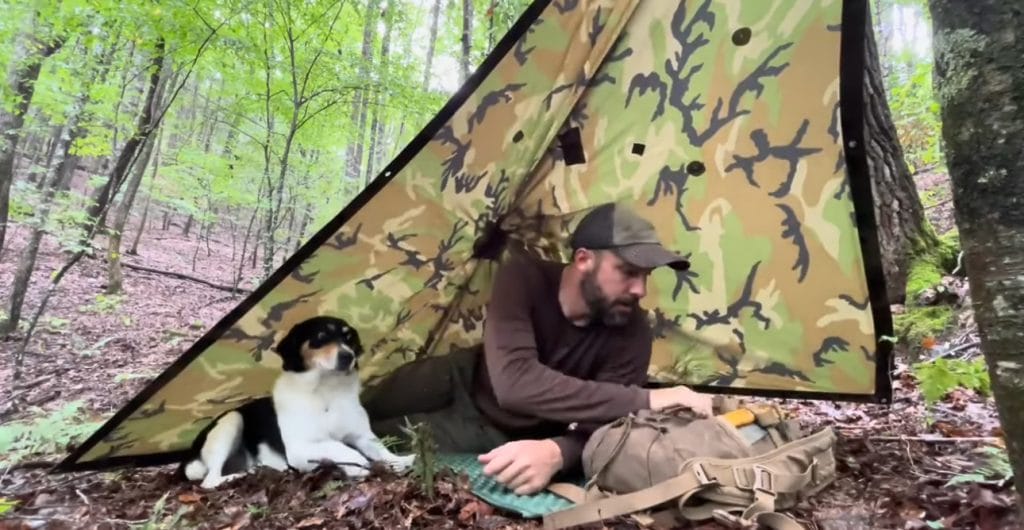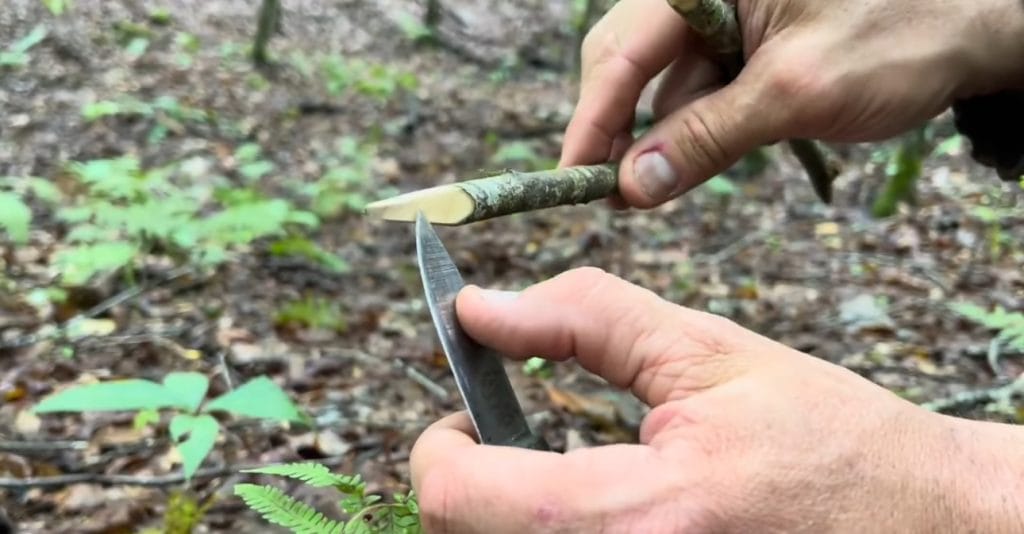
What Are the Best Survival Tips?
Top survival tips include caching gear in waterproof containers, filling water bottles with built in filters like the Grayl at every water source, setting up a quick poncho shelter, securing gear with paracord, and sharpening knives with a saw blade. These hacks, tested in a wet forest hike, save time and energy in emergencies.
When you’re miles from home with a storm brewing, the right survival tricks can mean the difference between safety and struggle. I learned this hiking with my dog Maggie, testing gear and techniques in a damp forest. These field-proven tips can save your time, energy, and maybe your life.
I was out with Maggie, my loyal dog, in a soggy forest, practicing survival hacks. The ground was wet, the air humid, and my pack held essentials like a poncho, Therm-a-Rest, and a folding saw. I’d cached a bow drill set in a hollow tree, but it got damp from a recent rain—a lesson to always waterproof caches. A nearby spring was barely trickling due to drought, reinforcing the need to secure water when you find it.
“If water is crucial and at a premium where you are, make sure that you are stocking up when you find it.”
We spotted deer moving through the trees, and I showed Maggie a trick: a soft “meh” sound to stop a deer for a clean shot. As rain loomed, I set up a poncho shelter against a hill, keeping us dry and cozy. These moments, plus knot-tying and gear-securing hacks, proved small tweaks make survival easier.
In 2014, a Pacific Crest Trail hiker survived unexpected snow by accessing cached supplies, staying warm and fed until rescue [1]. During Hurricane Katrina in 2005, those with water and basic shelters fared better while awaiting aid [2]. These events show caching gear, securing water, and quick setups are critical when disaster strikes.


| Item | Why It Matters | Field Note |
|---|---|---|
| Camo Poncho | Quick shelter and rain gear | Drape over a hill for a fast setup in minutes. |
| Therm-a-Rest | Insulates and saves space | Cut to shoulder-to-knee length for less bulk; strap securely to pack. |
| Paracord | Secures gear and shelters | Use short pieces (10–20 feet) for easy handling. |
| Dry Bag | Keeps gear dry in wet conditions | Essential for clothes and electronics in damp environments. |
| Folding Saw | Cuts stakes and firewood | Dummy-cord to prevent loss; use back to sharpen knives. |
| Wool Clothing | Insulates even when wet | Dries fast, doesn’t stink, ideal for remote settings. |
| SOL Escape Bivy | Lightweight, breathable shelter | Keeps you dry despite splashes in a poncho setup. |

What are the best survival tips for beginners?
Start with caching gear, securing water, and mastering a poncho shelter. My bow drill cache got wet because I didn’t seal it well—use airtight containers. Fill canteens at every source and practice a shoe-tying knot for fast setups [1]. These basics build confidence and preparedness.
How do you cache gear safely for survival?
Hide gear in natural spots like hollow trees along regular routes. Use waterproof containers to protect gear. My bow drill set got damp, so check caches regularly to ensure they’re dry and usable in an emergency [1].
How do you secure water in a survival scenario?
Fill your belly and canteens at every water source. Don’t count on the next one. A spring I found was nearly dry due to drought. Carry a filter or purification tablets to ensure safety, especially with small water sources [2].
What’s the fastest way to set up a survival shelter?
Use a camo poncho draped over a hill or tied to a tree with a shoe-tying knot. I set one up with Maggie in minutes. Stake corners at 45 degrees toward the anchor tree for stability and to shed rain effectively [3].
How do you keep gear dry in wet conditions?
Use dry bags inside a waxed pack and hang it under a poncho on a branch. I kept my pack dry by leaning it on my Therm-a-Rest against a tree, avoiding ground moisture that adds weight.
How do you sharpen a knife without a sharpener?
Hone your blade on the back of a saw or machete—50 strokes per side. I got my knife shaving-sharp in seconds using this trick. Focus on the cutting angle for a quick, effective touch-up without fancy tools.
Why is wool clothing important for survival?
Wool insulates even when wet, dries fast, and doesn’t stink. I wear it in remote settings for warmth under a poncho shelter. It’s a game-changer in damp conditions, keeping you comfortable and warm [3].
I’m Jason Salyer, sharing practical survival tips on my On3 YouTube channel and Substack. My hike with Maggie tested these hacks in real conditions, backed by research from FEMA, NOAA, and Wikipedia. Maggie and I also survived 10 days in Maine’s wilderness for National Geographic’s Called to the Wild (Episode 5, “Dog Gone”), proving these skills work.
[1] Wikipedia – Survival Skills. https://en.wikipedia.org/wiki/Survival_skills
[2] FEMA – Water Safety in Emergencies. https://www.fema.gov/sites/default/files/2020-07/water_safety_emergencies.pdf
[3] NOAA – Outdoor Safety Guide. https://www.weather.gov/safety/outdoor-safety
“By wisdom a house is built, and through understanding it is established.” – Proverbs 24:3
These tips build a foundation for survival. Prepare now to stay ready.
👉 Subscribe to On3Ready on Substack for daily prepping tips.
💥 Upgrade to $5/month for premium checklists, field guides, and exclusive resources.
Watch my YouTube channel for hands-on survival demos.
What’s the worst that can happen?
Explore the gear I personally use and trust.
Preparation is freedom. Do not wait for the grid to fail to figure out what you should have done. Start now. Train your body, build your get home bag, and learn how to move with confidence when everything else stops.
📩 Substack → On3Ready Newsletter
📺 YouTube → ON Three Channel
🔥 Patreon → Join On Three Community
🌲 Website → GoOn3.com
💪 Fitness → Go On Three Fitness
👕 Apparel → Shop Here

